How to get rid of slugs – 12 natural ways to keep these slimy invaders out of your garden for good
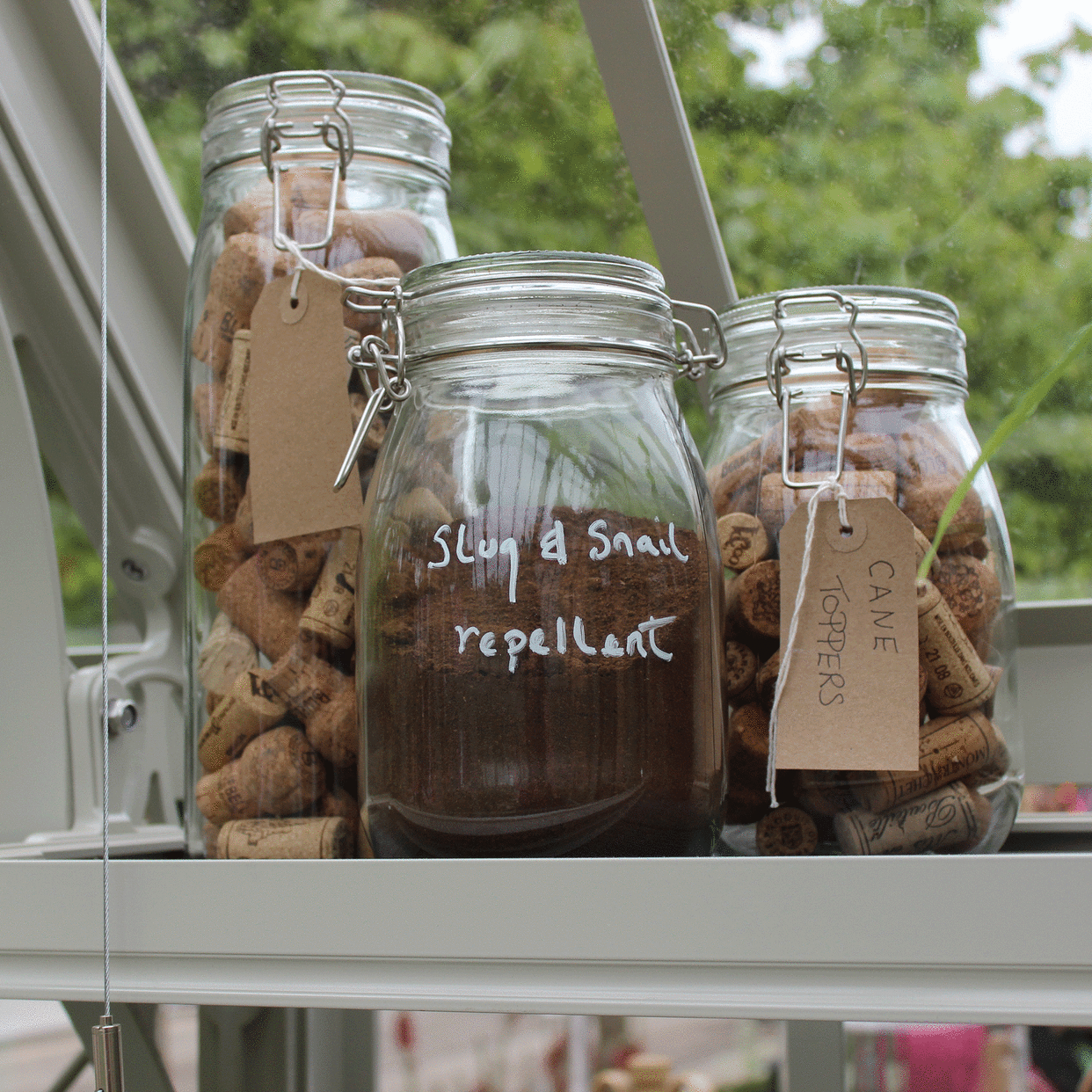
Slimy trails all over your lawn? Irregularly shaped holes in leaves? We hate to tell you this… but you probably have slugs. Don’t worry, though. We’ve got all the info you need to know on how to get rid of slugs.
Yes, when you put a huge amount of time and effort (and, let’s be honest, money) into bringing your garden idea to life, the last thing you want is for a slimy invader to ruin it. And while there are some slugs that can protect plants, a large portion of them will chomp on your lettuce, chow down on your delphiniums, and leave your garden looking a little worse for wear.
And while you could get rid of slugs using slug pellets and chemical pesticides, we’re all about the natural life here at Ideal Home. So, below, you’ll find 12 natural ways to kick these slimy invaders out of your garden for good.
How to get rid of slugs
As a team of green-fingered gardeners ourselves, we’ve pulled together our top tips for getting rid of slugs in the garden. Plus, we’ve called in the help of garden and pest experts to share their knowledge on the best (and natural) ways to keep them out.

1. Sprinkle coffee grounds
There are conflicting views on how successful using leftover coffee grounds is at fending off slugs. But if you have one of the best bean-to-cup coffee machines at your disposal and want to give it a go, many have found it to work wonders.
‘Caffeine is reported as poisonous to slugs. When ingested, it causes severe dehydration and can therefore slow slugs down or even kill them,' explains Steve Chilton, a garden expert from LeisureBench.
‘However, there have been many mixed reviews on the effectiveness of this method. Some have reported poor results while others have managed to get rid of nearly all their garden slugs.’
So, it’s worth seeing for yourself whether it works. Just remember to wait until they are fully dry and have cooled down, after you brew some for yourself, before using them in your garden.
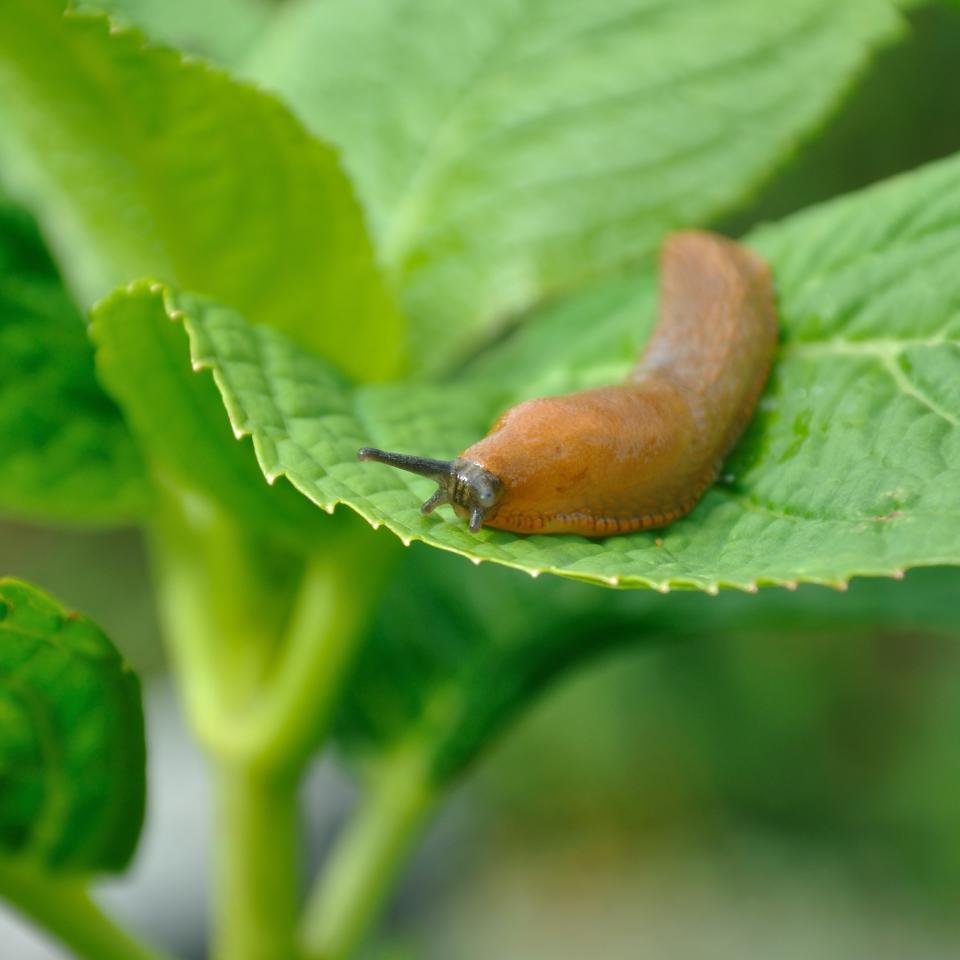
2. Apply nematodes
Nematodes are growing in popularity as more people realise that biological pest controls are much safer (and often more effective) than chemical ones.
But if you’re not sure what nematodes are, they are essentially microscopic creatures that can be dissolved in water and then poured over the slug-affected plants and crops. They then work to reduce the amount of slugs in your garden.
‘Nematodes work by entering the body of its prey and releasing bacteria from the inside, consequently leading to an infection and then the death of the invertebrate,' explains Matthew Martin from nematode producer Nemasys. 'The nematodes will then feed and multiply on the pests’ body and continue searching and killing more prey.’
However, you do need to reapply these nematodes every few months for them to be continually effective.
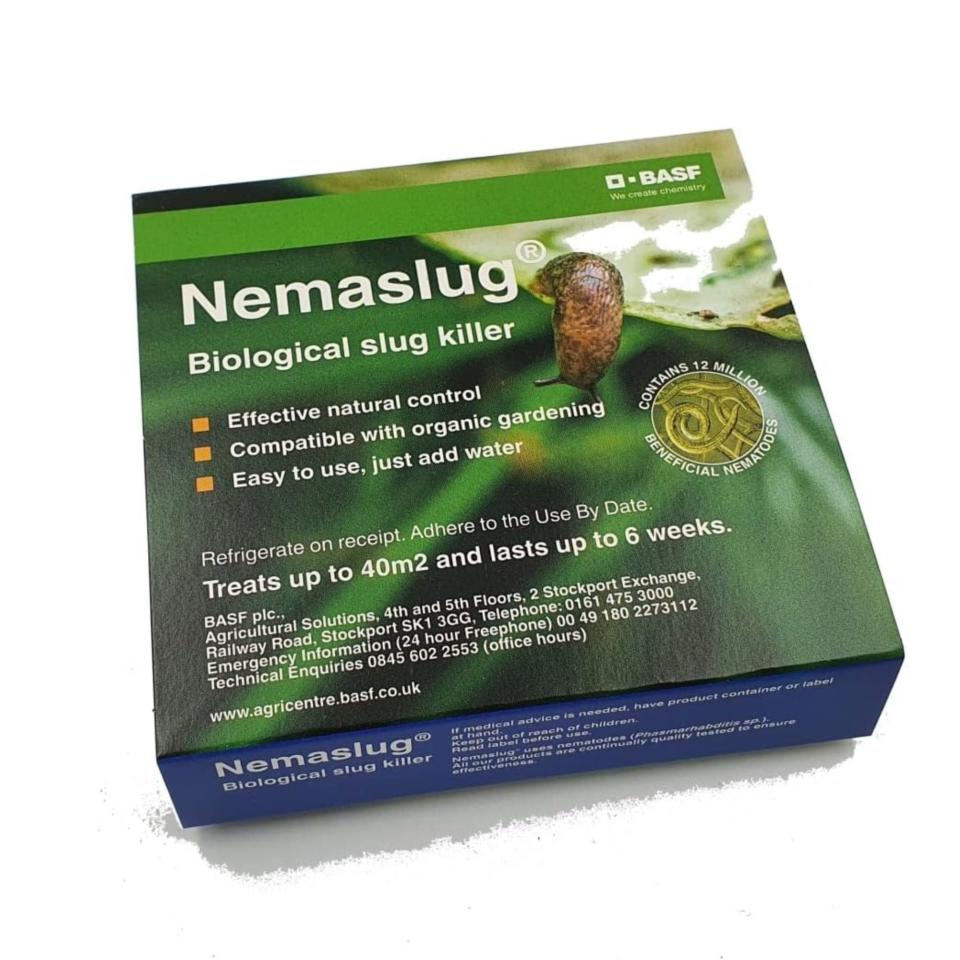
Nemaslug Slug Killer Standard Pack
With the ability to treat 40 sqm of garden, these nematodes will quickly get rid of slugs in your garden. Just remember to re-apply every six weeks for guaranteed success.
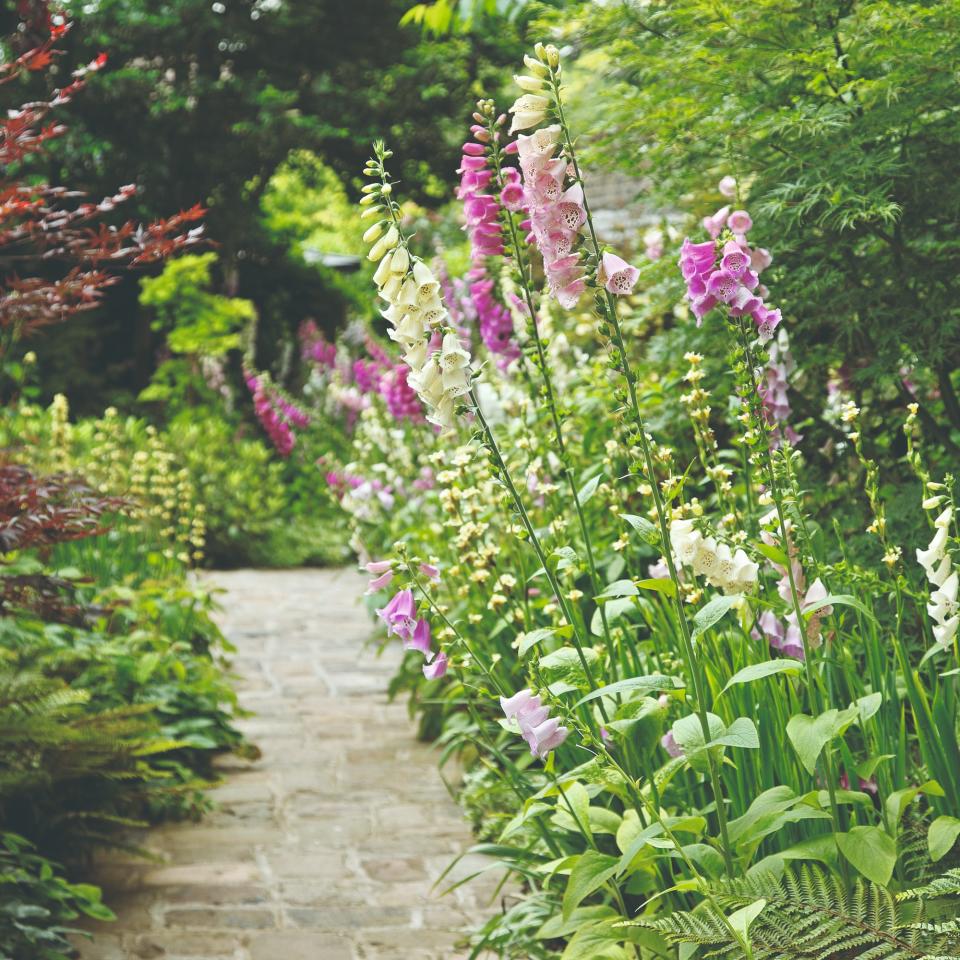
3. Use a plank of wood
You may wonder what a plank of wood has to do with getting rid of slugs, but using a damp plank of wood is one of the best slug hacks out there.
That’s because slugs are naturally attracted to damp, wet things - meaning you can turn this damp plank of wood into a slug trap. Simply place it near the slug infestation and leave it overnight.
In the morning, you should find the plank of wood covered in slugs. You can then pick them off and relocate them away from your beloved plants.
And while there’s no guarantee that they won’t come back, it’s still incredibly effective.
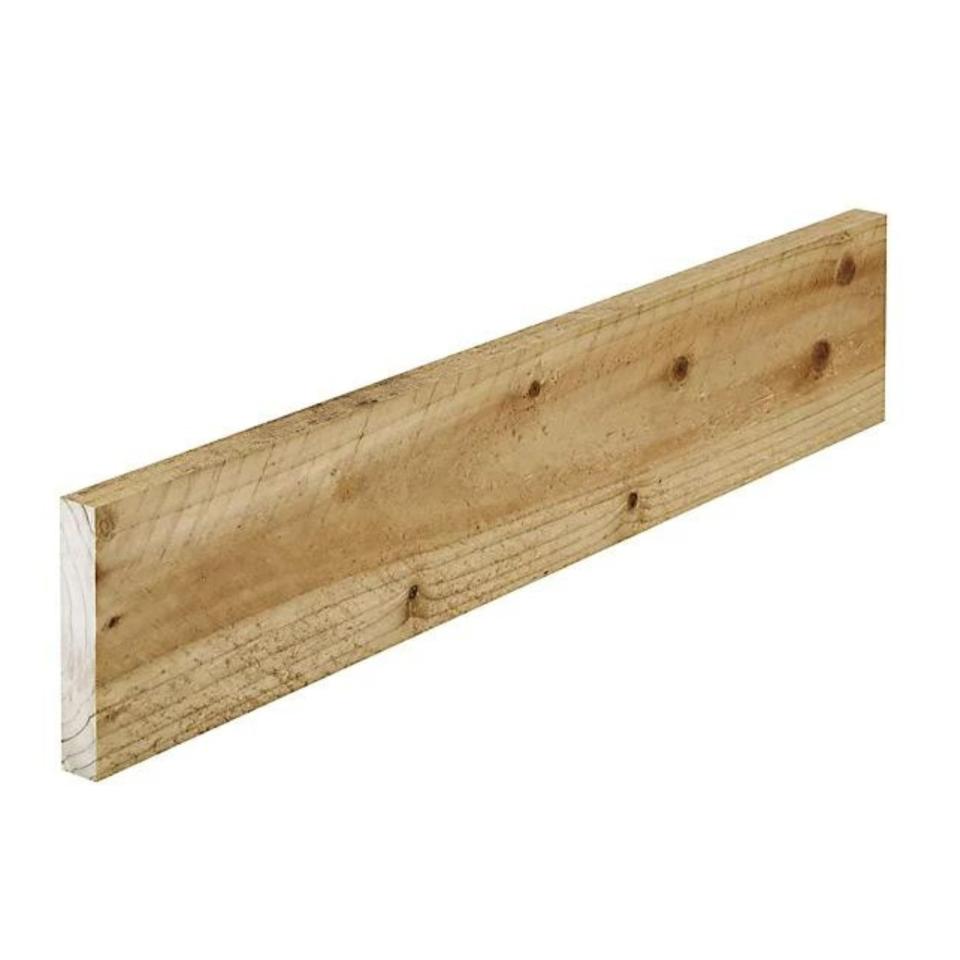
Treated Rough Sawn Stick Timber
If you don't have any wood lying around the house, this timber will do the trick. Just make sure that it's damp before you start using it as a slug trap.
4. Apply salt
Hands up if you already have salt in your kitchen cupboards? Well, if you want a cheap way to get rid of slugs, salt could be your new best friend.
To do this, you’ll want to identify where the slugs are being drawn and then create a barrier by sprinkling a line of salt around the areas that you want to protect. There are some drawbacks, though.
Julian Hobday, Managing Director of PureSalt, warns, ‘While salt can be effective in repelling slugs, it is important to use it sparingly and with caution. Excessive salt can harm plants and the surrounding soil. Consider alternative slug control methods if you have sensitive plants.’
Because of this, you may succeed more in pouring the salt directly onto the slugs. Steve says, ‘Although time-consuming, salt gives guaranteed and instant results by killing slugs through osmosis, where water is extracted from the slug resulting in severe dehydration.’
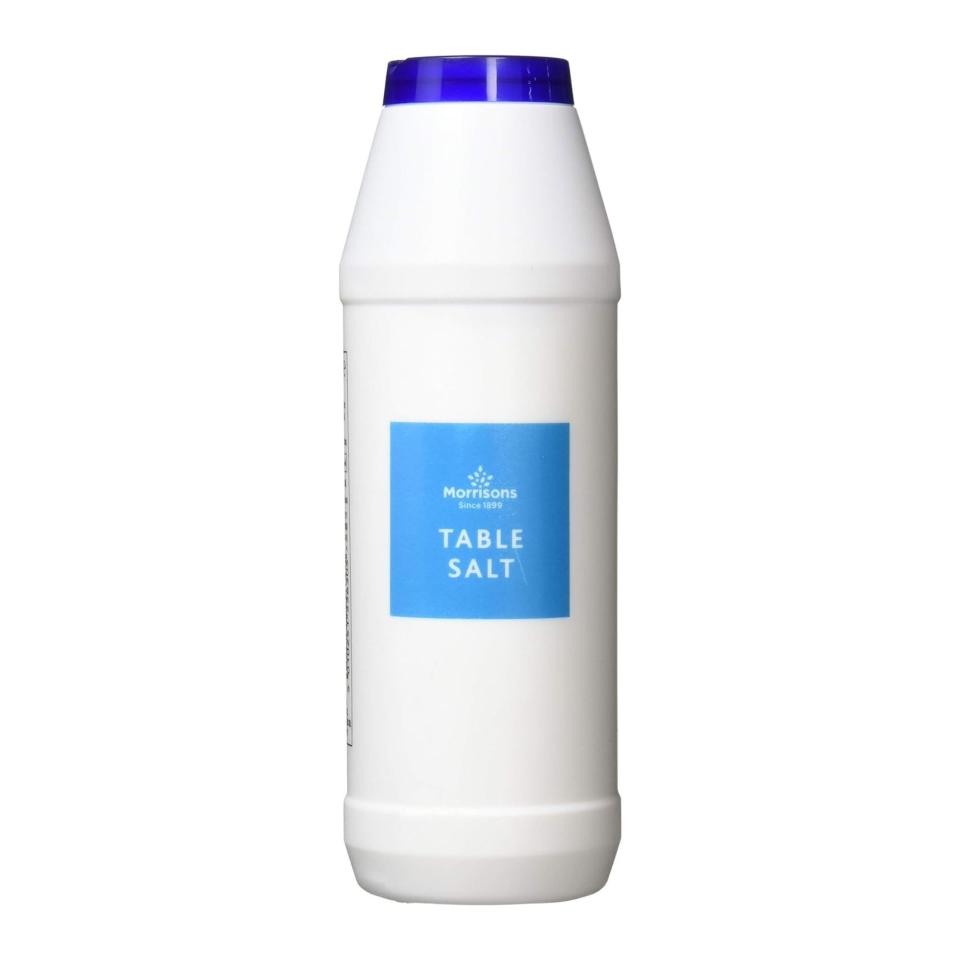
Morrisons Table Salt Bottle, 750g
Even if you only need a small amount of salt for the slugs in your garden, it's worth stocking up on salt for this bargain price.
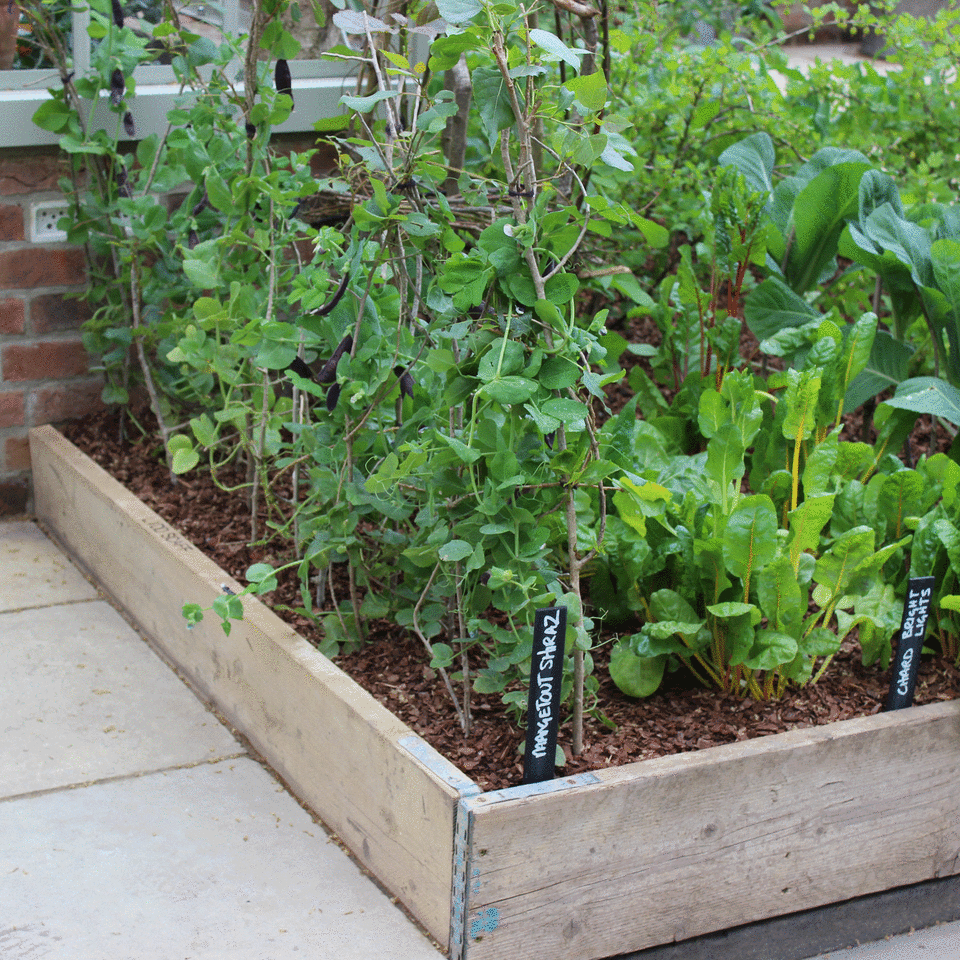
5. Use seaweed
You might associate seaweed with summer holidays or plant fertilisers, but seaweed can also be an effective tool when trying to get rid of slugs.
This is due to the high salt content of seaweed, which works similarly to traditional salt. Lucy Taylor, Manager at Vine House Farm, explains, ‘Slugs are deterred from eating it, making it an effective border for susceptible plants.’
‘You can use fresh or powdered seaweed, as long as you make a continuous, wide border around your plants to discourage slugs from crossing.’
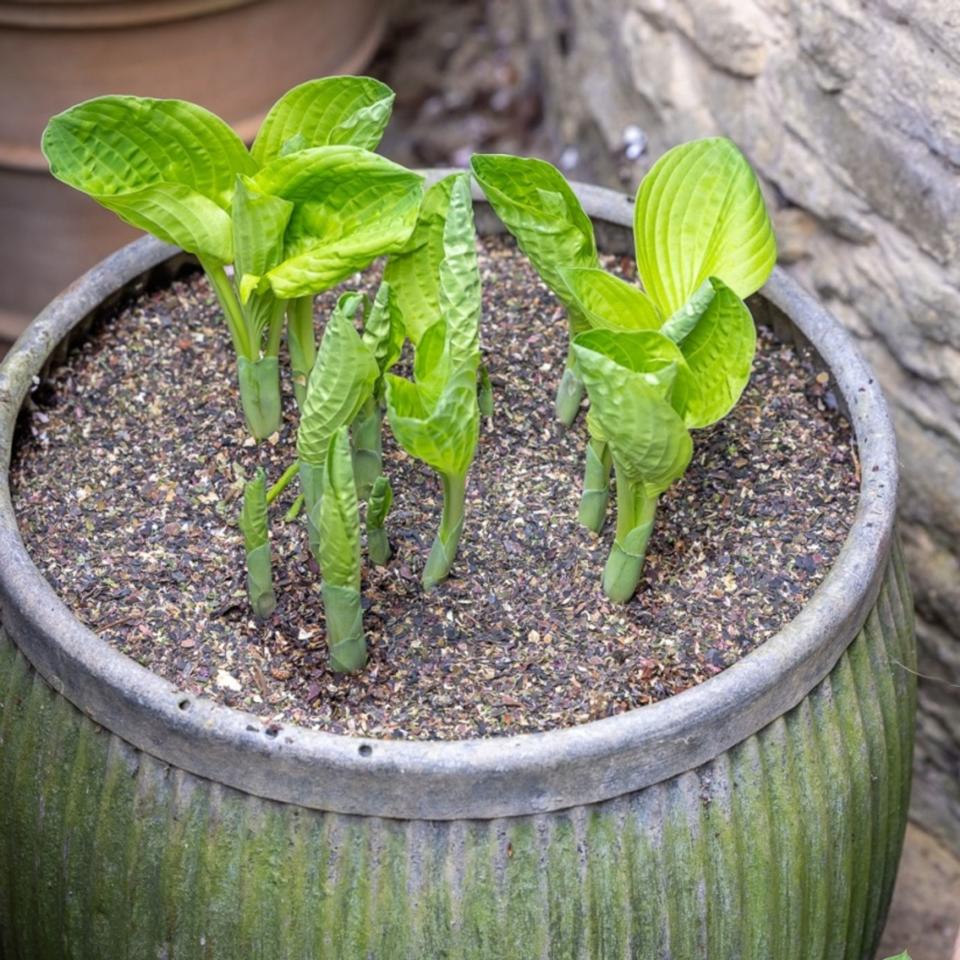
Sarah Raven Seaweed Slug Repellent (1.25kg Bag)
Sustainably harvested from UK shores, this seaweed has been dried to create a granular repellent you can simply sprinkle over your garden beds. You can also buy it in a 5kg tub if needs be.
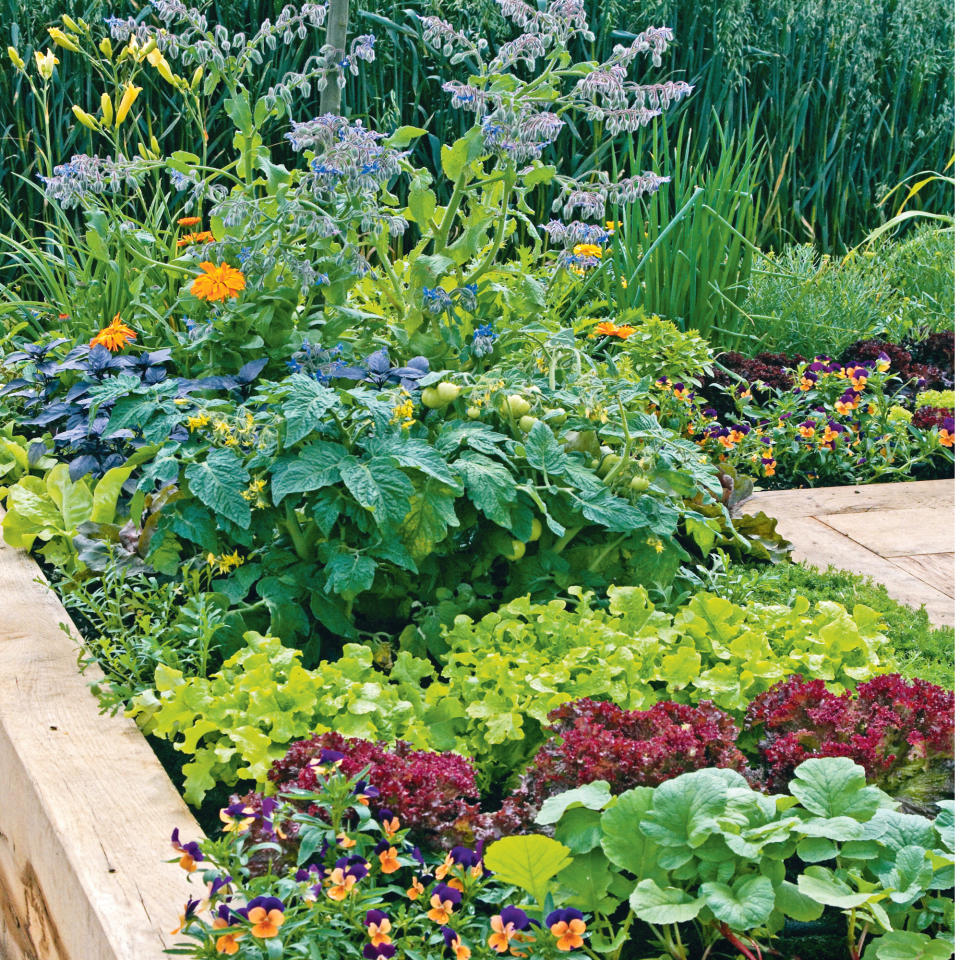
6. Make a garlic spray
If you just want to repel slugs rather than kill them completely, making your own garlic spray is a great, natural option. This is all thanks to the chemical allicin, which is responsible for the taste and smell of garlic. And, fortunately for us, slugs absolutely hate the smell.
The only downside is that you can’t simply buy this off the shelf. But if you have some fresh garlic sitting in the cupboard, follow our simple step-by-step guide to help you make garlic spray at home.
Then, you can spray it on your vulnerable plants and let the garlic ward off the slugs.
7. Create a sand border
Much like with salt, the gritty surface of sand is rather difficult for slugs to cross. Again, you will have to top up your sand border after any rainfall, but this can create an added hurdle for the slugs to get over before they make it to your plants or an area like a patio or outdoor kitchen.
Plus, sand is incredibly easy to come by and used for various tasks around the garden. So, you might even have some lying around in the shed!

Tarmac Sharp Sand
The sharper the sand, the more effective the slug repellent. And this sharp sand is ideal if you want to create a 'do not cross' barrier for the slugs in your garden.
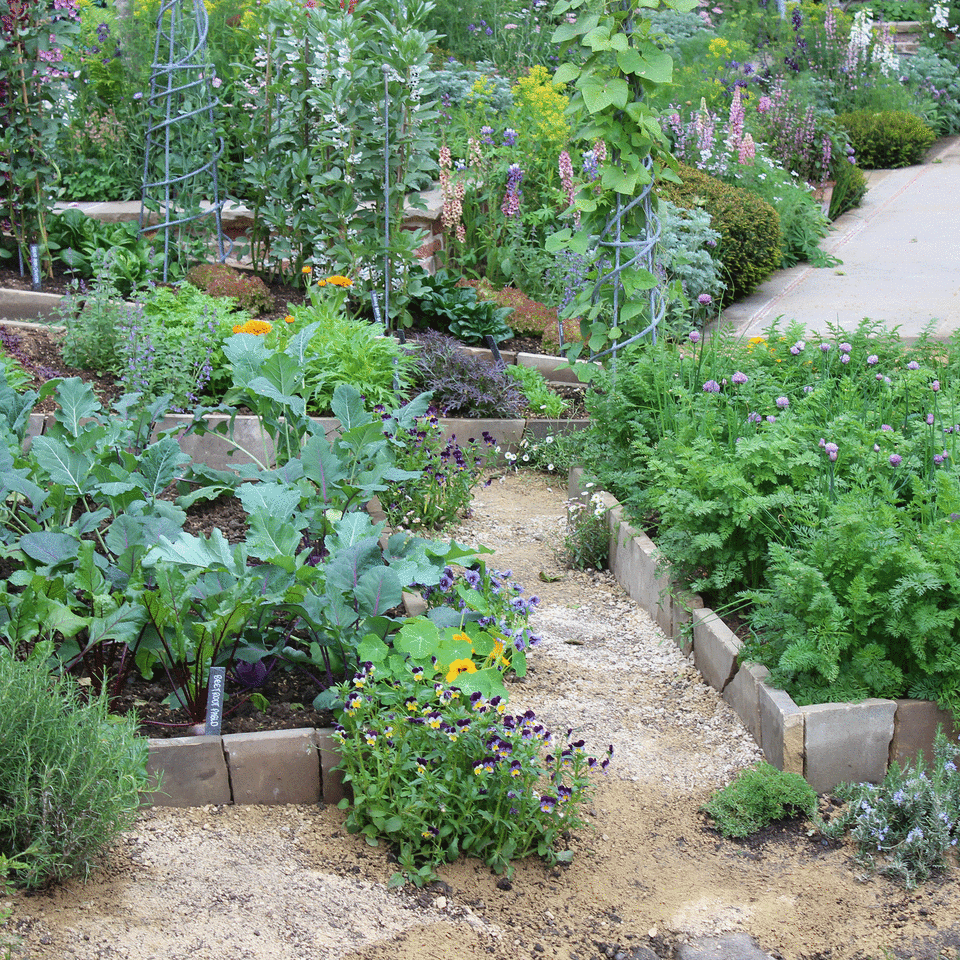
8. Sprinkle eggshells
If you love to use your food waste for good, you’ll be happy to know that there are so many ways to use eggshells in the garden. In fact, eggshells can deter slugs.
Lucy says, ‘Breaking eggshells into 1cm pieces and laying them in a similar fashion to the sand - a continuous border about 8cm thick - creates a sharp, uncomfortable border that slugs will avoid crossing.’
Opting for eggshells also has the added benefit that the nitrates in the shells will work to improve soil quality as they start to naturally break down.
If you don’t eat eggs, though, there are alternatives out there. In fact, whelk shells can work just as well as eggshells and are relatively cheap to buy.
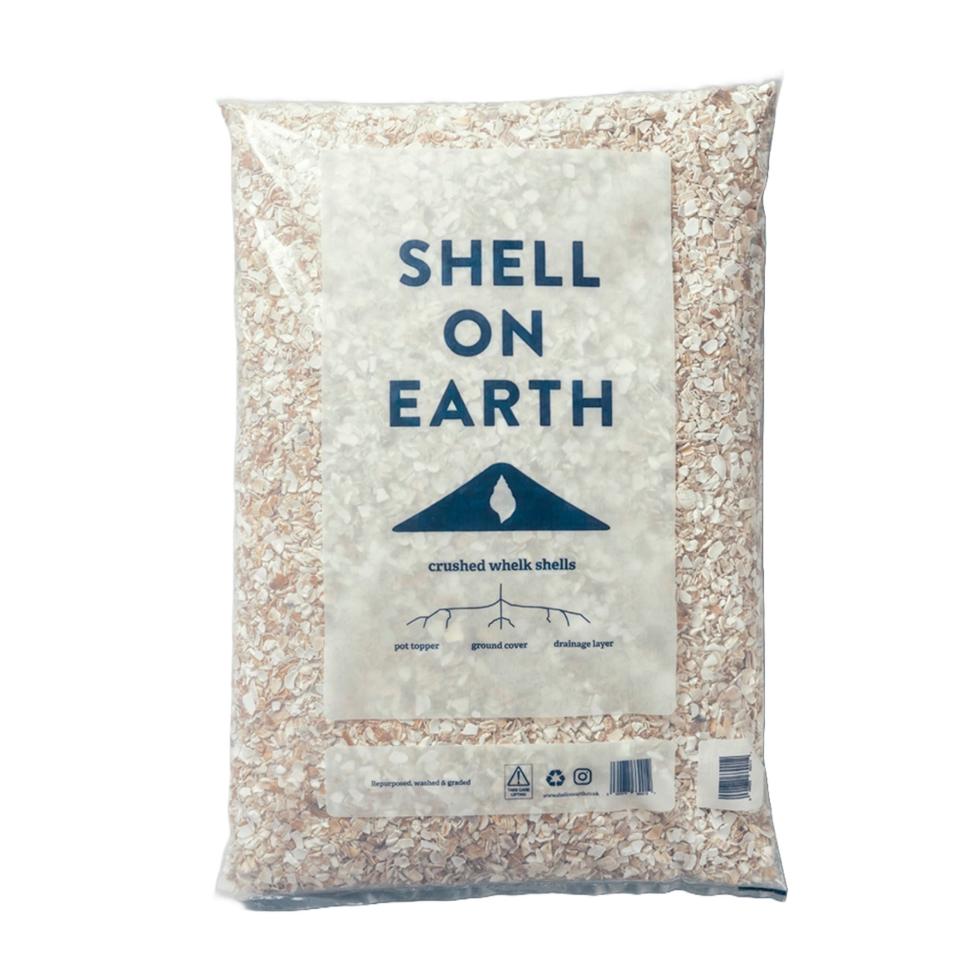
Shell on Earth Whelk Shells (1kg bag)
If 1kg isn't enough for your slug infestation, you also have the chance to buy a 3kg bag, an 11kg bag, or two 12 litre bags. Aim to apply a 20-30mm layer around the base of plants for best results.

9. Make a beer trap
Got a spare bottle of beer to hand? Well, the scent of beer actually attracts slugs, which makes it the perfect slug trap.
‘This method requires you to lay traps roughly every square metre to ensure full protection of the plant,’ suggests Lucy.
‘Fill some plastic containers like yoghurt pots with a little beer, dig holes around the plants and plant the containers in, allowing a lip of a centimetre or two to remain above the ground. Empty and refill the traps regularly, leaving the slugs to be safely scavenged by other animals.’
And if you don’t use the whole bottle for these slug beer traps, you can use the leftovers to clean with beer.
10. Deter with pot feet
If you’ve tried to grow vegetables in pots, you’ll know just how difficult it is to get rid of slugs when all they want to do is chomp on your green beans and snack on your cucumbers. But one way to stop slugs is to deter them with pot feet.
These pot feet will lift your pot off the ground, making it more difficult for the slugs to climb up the pots and ravage your flowers or produce.
And while this can be fairly effective in getting rid of slugs, some nifty slugs may still be able to bypass the pot feet. So, it may be worth combining this method with another on this list.
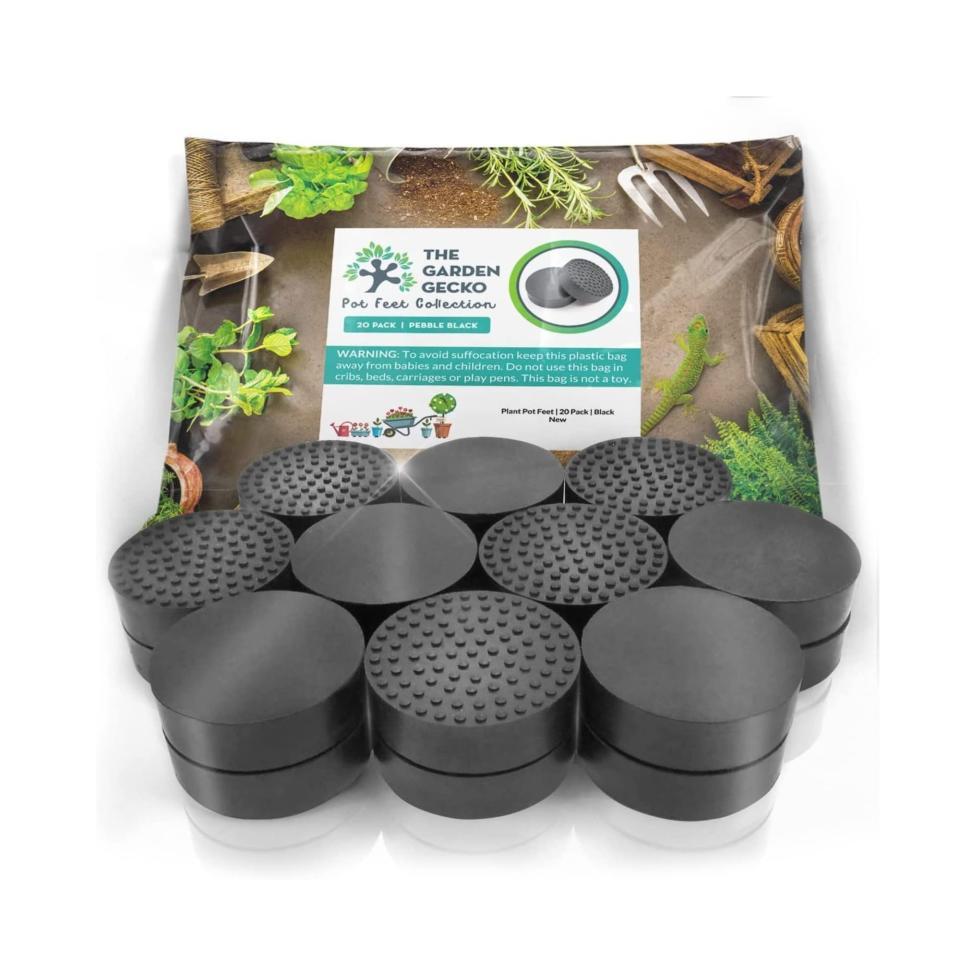
The Garden Gecko Invisible Pot Feet
This pack of 20 pot feet should help you lift your containers out of harm's reach. And with a non-slip surface grip, they're not going anywhere.
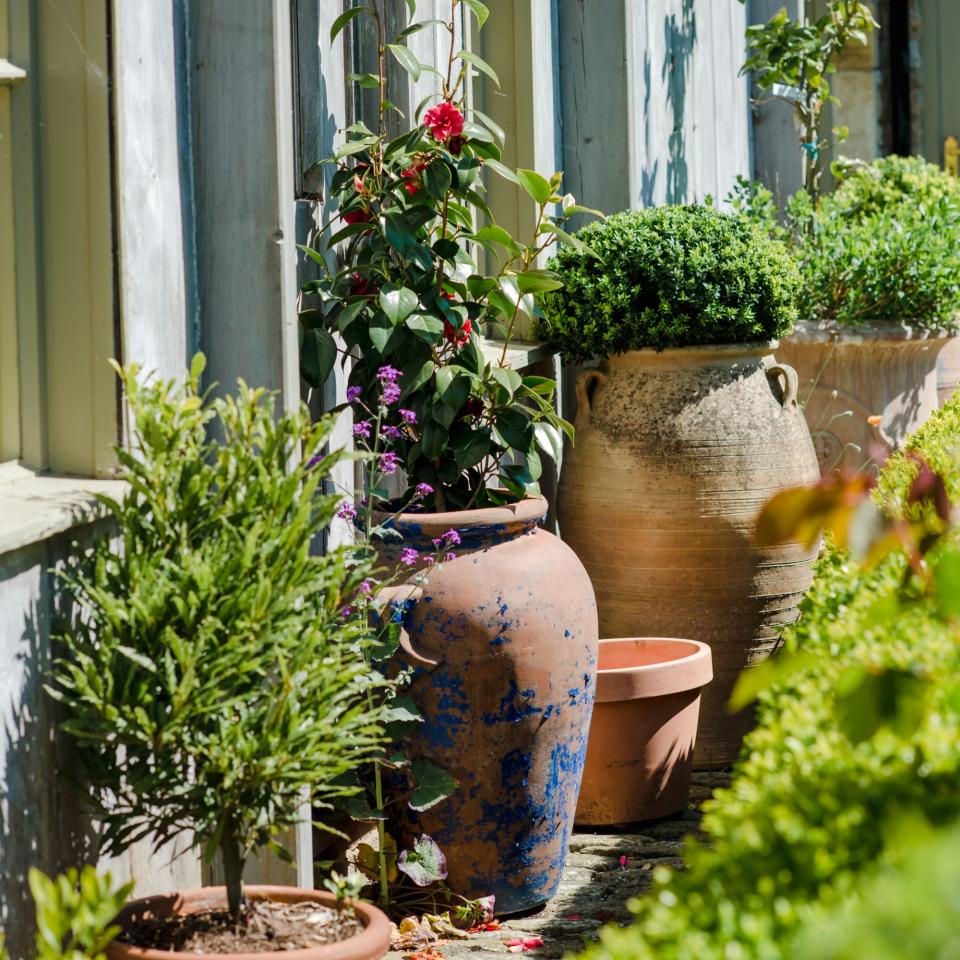
11. Utilise copper tape
Copper tape, also called slug tape, is ideal for keeping slugs away from your container garden, as it's incredibly easy to stick around your plant pots.
Steve agrees, stating, ‘Copper tape is probably one of the most popular and effective methods for repelling slugs. This is most effective when the copper tape is placed around the circumference of a plant pot, entryway or container, the copper will not kill them but rather deter the slugs from crossing due to its irritating nature.’
Copper tape is a relatively inexpensive method but you will want to ensure that the tape is thicker than 4cm and to keep it clear of any debris.
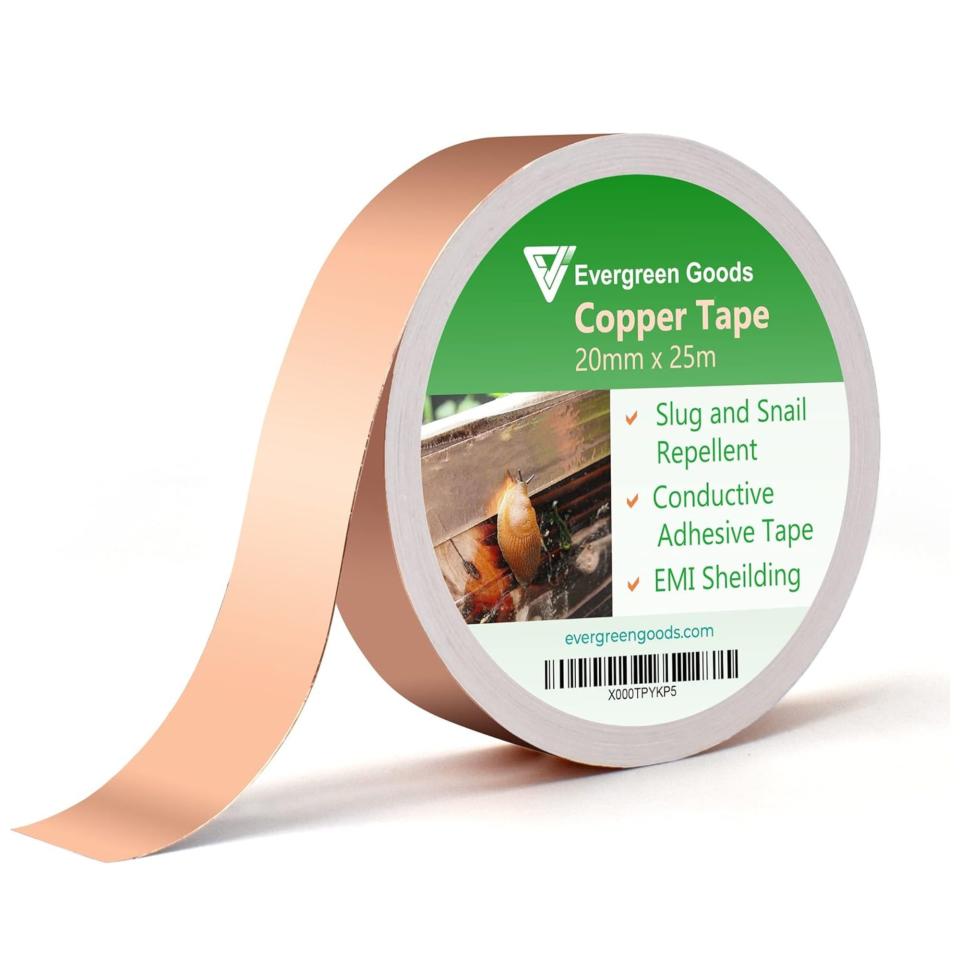
EVG 20mm x 25m Copper Slug Tape (2 pack)
Coming in a pack of two, this copper slug tape should keep your whole garden free of slugs. The self-adhesive nature of the tape means it'll stick to anything, too.
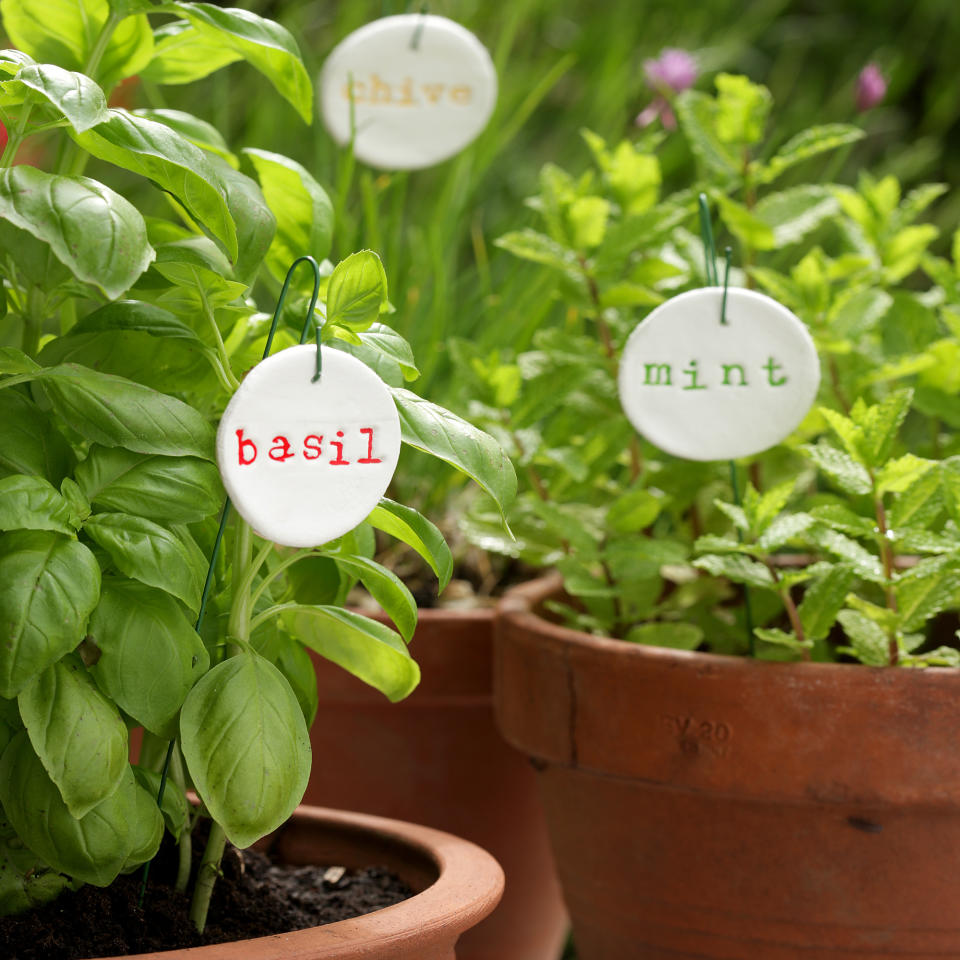
12. Plant slug-repellent plants
One thing you might not know is that there are so many plants that slugs hate. So, why don’t you use them to your advantage?
Robert Collins, pest control expert at Myjobquote.co.uk, explains, ‘Hydrangea, ferns and euphorbia are good repellents for slugs as are geraniums.’
They especially hate herbs such as mint, rosemary, fennel, thyme and garlic because of their strong odours, too.
Then, you can either surround the plants that you’re hoping to protect from slugs with a border of these plants or use them more sporadically around your outdoor space to keep slugs away from your doorways or seating areas.

Hydrangea Paniculata Little Spooky Garden Shrub
This outdoor hydrangea comes in its own attractive pot, allowing you to add this beautiful flower to your container garden. Plus, it should work wonders when trying to get rid of slugs.
FAQs
Why is my garden full of slugs?
Ultimately, your garden is full of slugs because you provide everything they need. Slugs love warm and wet conditions, and they also love chomping on young seedlings and crops. So, if the weather has been wet and warm and your plants and produce are growing well, your garden offers it the conditions it loves.
What do slugs hate most?
Slugs hate strong scents, hot temperatures, and dry conditions. If they are exposed to any of these things, they will either steer clear of the environment or die.
However, most experts now agree that we should deter slugs instead of killing them. Morris Hankinson, Director of Hopes Grove Nurseries, explains, ‘Whether we like it or not, slugs are part of the ecosystem. Recently, they have been reclassified as a gardener’s friend, not foe.’
‘They are food for birds and other wildlife which has been needed this year especially with the colder spring weather, and out of the 40 species of slug found in the UK, not all of them will be hugely damaging to your plants. So protecting your plants from slugs, rather than eradicating them may be the best option after all.’
So, there you have it. Now you know how to get rid of slugs, it’s time to put your plan into action.


